Timeline of Hybrid Cat Breeding: The Powerful Truth
Quick Summary: The timeline of hybrid cat breeding began in the 1960s with the creation of the Bengal cat, crossing domestic cats with Asian Leopard Cats. In the 1980s and 1990s, other hybrids like the Savannah (Serval cross) and Chausie (Jungle Cat cross) emerged. Today, ethical considerations and regulations guide responsible hybrid breeding, focusing on health, temperament, and conservation.
Have you ever wondered about those stunning cats with wild looks and unique personalities? These captivating felines are often hybrid cats, a mix of domestic and wild species. Understanding their history can help you appreciate the journey of hybrid cat breeding and the important ethical considerations involved. It’s a fascinating topic, but knowing where to start can be a bit confusing. Don’t worry; I’m here to guide you through the key milestones and responsible practices in hybrid cat breeding.
In this article, we’ll explore the fascinating timeline of hybrid cat breeding, from its early beginnings to today’s ethical standards. We’ll cover the key hybrid breeds, the challenges breeders face, and the crucial role of conservation. Get ready to learn about the captivating world of hybrid cats!
The Dawn of Hybrid Cat Breeding
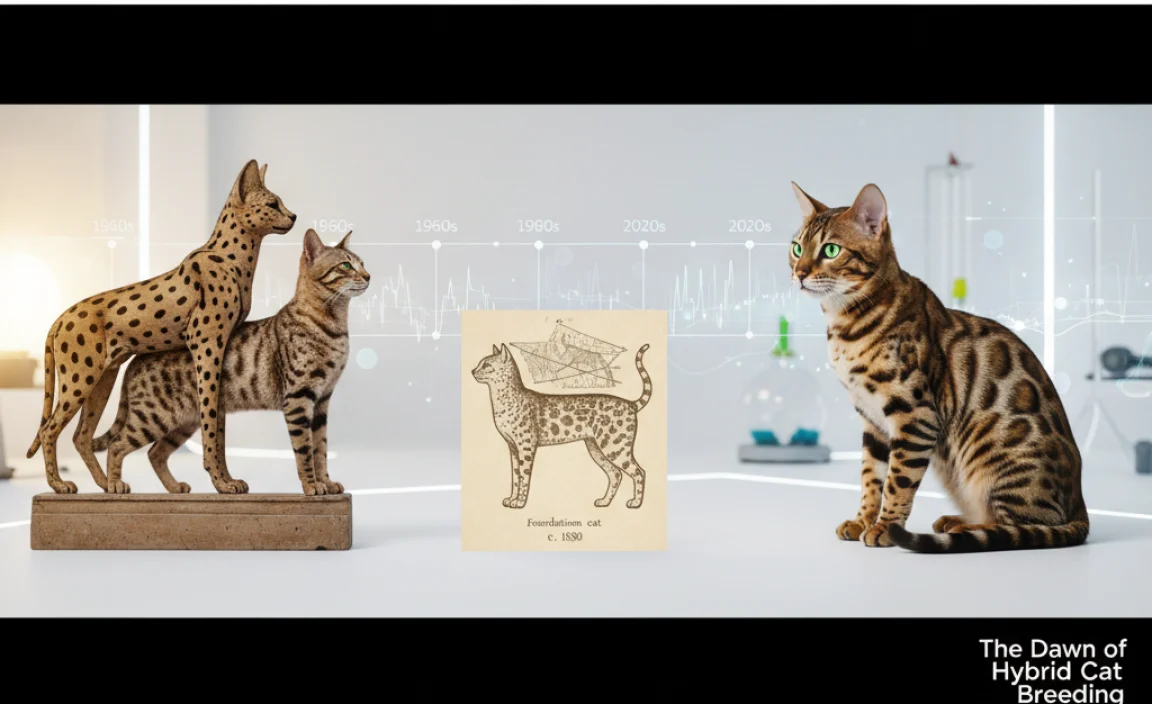
The story of hybrid cat breeding starts with a simple idea: to bring the beauty of wild cats into our homes while maintaining the gentle nature of domestic breeds. This journey, however, has been filled with challenges and ethical considerations. Let’s dive into the early days of this unique field.
Early Experiments and the Bengal Cat
The first notable hybrid cat breed was the Bengal. In the 1960s, breeders began crossing domestic cats with Asian Leopard Cats (ALCs). These small, wild cats are known for their striking spotted coats. Jean Mill, a pioneer in Bengal breeding, aimed to create a domestic cat with the ALC’s exotic appearance but with a friendly, predictable temperament.
The initial crosses resulted in cats that were not always suitable as pets. Early generations, known as F1 (first filial) hybrids, often exhibited wild behaviors. Breeders had to carefully select and breed these cats over several generations to achieve a more domestic temperament. This process took time and dedication.
Challenges and Setbacks
Early hybrid cat breeding faced many hurdles. One of the main challenges was temperament. The first generation (F1) hybrids often displayed behaviors that were difficult for the average pet owner to manage. These cats could be aggressive, fearful, or simply too energetic for a domestic environment. Health issues were also a concern, as breeders had to understand and address the unique genetic combinations of these crosses.
Another significant challenge was acceptance. Many cat fanciers and organizations were initially skeptical of hybrid breeds. Concerns about the welfare of the cats and the potential impact on wild cat populations were raised. Breeders had to work hard to demonstrate that hybrid breeding could be done responsibly and ethically.
The Rise of New Hybrid Breeds

As the Bengal cat gained popularity, other breeders began to explore creating their own hybrid breeds. This led to the development of several new and exciting hybrid cats, each with its own unique wild ancestor and set of characteristics.
The Savannah: A Serval’s Legacy
The Savannah cat is a cross between a domestic cat and a Serval, a medium-sized African wild cat with long legs and large ears. The Savannah is known for its tall, slender build and striking spotted coat. The breed was developed in the 1990s and quickly gained popularity for its exotic appearance and intelligent, active personality.
Like the Bengal, early generations of Savannahs (F1 and F2) can be challenging to handle due to their wild instincts. Breeders focus on producing later generation Savannahs (F4 and beyond) that are more suitable as pets. These cats are known for being loyal, playful, and even dog-like in their behavior.
The Chausie: A Jungle Cat Connection
The Chausie is a hybrid of domestic cats and Jungle Cats ( *Felis chaus*), a wild cat species found in Asia and the Middle East. The Chausie is a larger, athletic cat with a distinctive, slightly wild appearance. Breeders began working with Chausies in the 1990s to create a breed that combined the Jungle Cat’s striking looks with a domestic cat’s temperament.
Chausies are known for their intelligence, energy, and affectionate nature. They are often described as being very people-oriented and enjoy being part of a family. Due to their wild heritage, Chausies require plenty of exercise and mental stimulation to stay happy and healthy.
Other Notable Hybrids
While the Bengal, Savannah, and Chausie are the most well-known hybrid breeds, there are several other notable examples. These include:
- The Toyger: Bred to resemble a tiger, but is entirely domestic.
- The Serengeti: A cross between a Bengal and an Oriental Shorthair, bred to resemble a Serval without using any wild cat genes.
- The Safari: A rare hybrid of a domestic cat and a Geoffroy’s Cat, a small wild cat from South America.
Ethical Considerations and Regulations
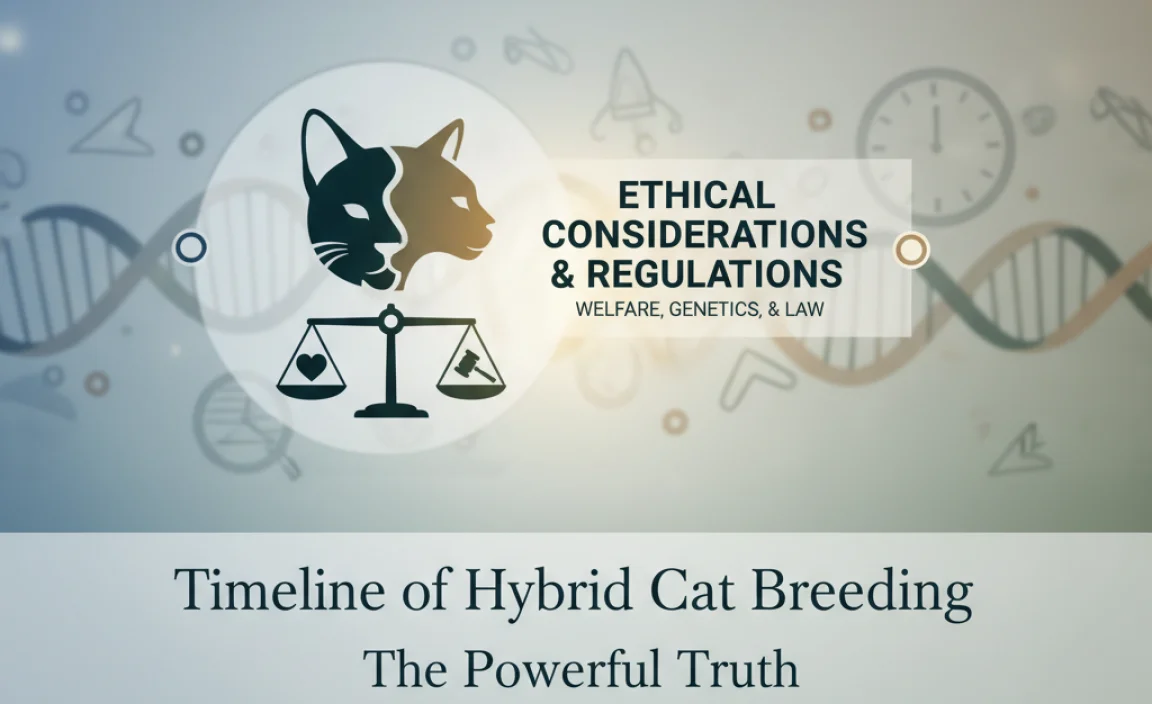
Hybrid cat breeding is not without controversy. Concerns about animal welfare, genetic health, and the impact on wild cat populations are often raised. Responsible breeders adhere to strict ethical guidelines and regulations to ensure the well-being of their cats and the conservation of wild species.
Animal Welfare Concerns
One of the primary ethical considerations in hybrid cat breeding is the welfare of the animals. Early generation hybrids (F1, F2) can exhibit wild behaviors that make them unsuitable as pets. These cats may require specialized care and environments that are difficult for the average owner to provide. Responsible breeders carefully screen potential owners and provide extensive education and support.
Another concern is the potential for genetic health problems. Crossing different species can introduce new genetic traits and increase the risk of inherited diseases. Responsible breeders conduct thorough health testing and carefully select breeding pairs to minimize these risks. They also work with veterinarians and geneticists to monitor the health of their cats and identify any potential problems early on.
Conservation Issues
Hybrid cat breeding can also raise conservation concerns. Some people worry that the demand for hybrid cats could encourage the illegal poaching of wild cats. Responsible breeders are committed to protecting wild cat populations and do not support or participate in any activities that could harm them. They often work with conservation organizations to support efforts to protect wild cats and their habitats.
Regulations and Breed Standards
To ensure responsible breeding practices, many cat organizations have established regulations and breed standards for hybrid cats. These standards address issues such as temperament, health, and genetic diversity. Breeders who adhere to these standards are more likely to produce healthy, well-adjusted cats that make good pets.
The International Cat Association (TICA) is one of the leading organizations that recognizes and registers hybrid cat breeds. TICA has strict rules for registering hybrid cats and requires breeders to adhere to a code of ethics that promotes responsible breeding practices. Other organizations, such as the Cat Fanciers’ Association (CFA), do not recognize hybrid breeds due to concerns about their welfare and the impact on wild cat populations.
The Modern Hybrid Cat Breeding Landscape

Today, hybrid cat breeding is a more established and regulated field than it was in its early days. Breeders have gained a better understanding of the genetics and behavior of hybrid cats, and they are more committed to responsible breeding practices.
Advances in Genetics and Health Testing
Advances in genetics and health testing have played a crucial role in improving the health and well-being of hybrid cats. Breeders can now use genetic tests to screen for inherited diseases and identify cats that are at risk of developing health problems. This allows them to make more informed breeding decisions and minimize the risk of passing on genetic defects.
Health testing is also important for identifying cats with potential temperament issues. By carefully observing the behavior of their cats and conducting temperament tests, breeders can select breeding pairs that are more likely to produce kittens with desirable personalities. This helps to ensure that hybrid cats are suitable as pets and can thrive in a domestic environment.
The Role of Cat Associations
Cat associations like TICA play a vital role in promoting responsible hybrid cat breeding. These organizations provide breeders with guidelines and resources to help them breed healthy, well-adjusted cats. They also register hybrid cats and maintain pedigrees, which helps to ensure the genetic integrity of the breeds.
TICA’s code of ethics requires breeders to provide their cats with proper care, nutrition, and veterinary attention. It also prohibits breeders from engaging in any practices that could harm the health or welfare of their cats. By adhering to these standards, breeders can help to ensure that hybrid cats are treated humanely and with respect.
The Future of Hybrid Cat Breeding
The future of hybrid cat breeding is likely to be shaped by ongoing advances in genetics, health testing, and responsible breeding practices. As breeders gain a deeper understanding of the complexities of hybrid genetics, they will be able to produce even healthier and more well-adjusted cats.
There is also a growing emphasis on conservation and the protection of wild cat populations. Responsible breeders are committed to supporting conservation efforts and ensuring that their breeding practices do not harm wild cats or their habitats. By working together, breeders, cat associations, and conservation organizations can help to ensure that hybrid cat breeding is done in a way that benefits both cats and the environment.
Timeline of Hybrid Cat Breeding
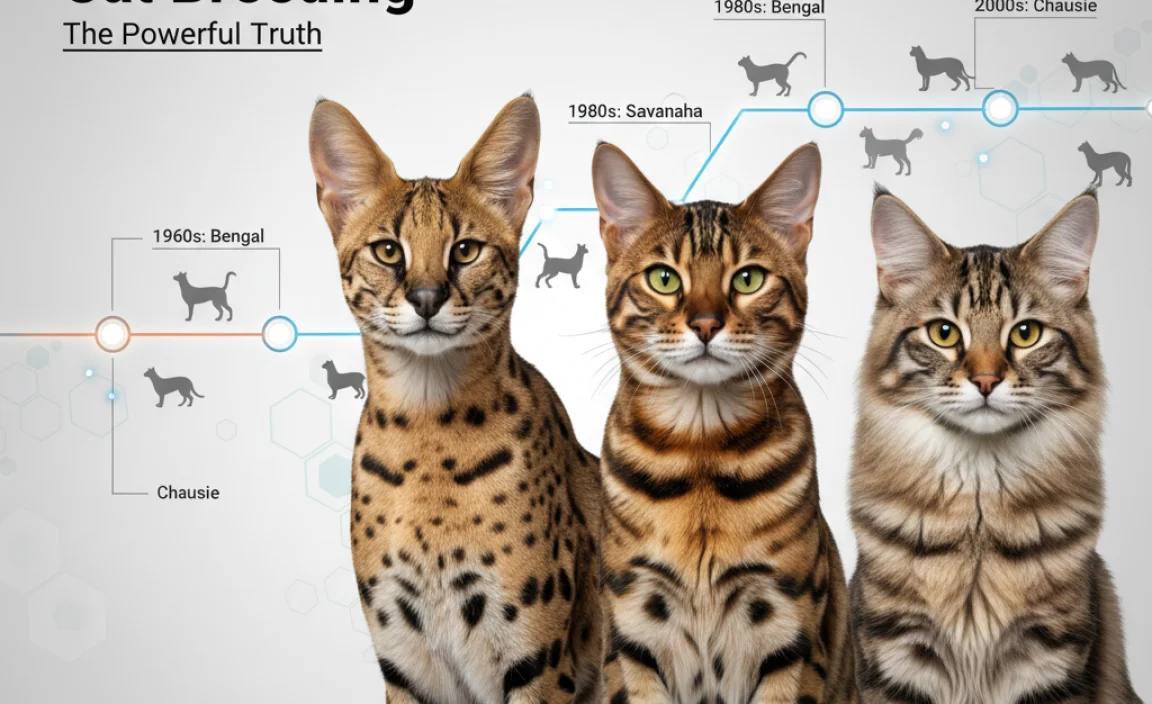
Here’s a detailed timeline showcasing the key milestones in hybrid cat breeding:
| Year | Event | Description |
|---|---|---|
| 1960s | Early Bengal Breeding | Jean Mill begins crossing domestic cats with Asian Leopard Cats (ALCs) to create the Bengal breed. |
| 1970s | Initial Challenges | Breeders face challenges related to temperament, health, and acceptance of early-generation Bengal cats. |
| 1980s | Bengal Recognition | The Bengal cat gains recognition and popularity as breeders refine the breed’s temperament and health. |
| 1990s | Savannah Development | The Savannah cat, a hybrid of domestic cats and Servals, is developed and gains popularity. |
| 1990s | Chausie Development | The Chausie cat, a hybrid of domestic cats and Jungle Cats, is developed with a focus on temperament and health. |
| 2000s | Ethical Guidelines | Increased focus on ethical breeding practices, animal welfare, and conservation issues in hybrid cat breeding. |
| 2000s-Present | Genetic Advances | Advances in genetics and health testing improve the health and well-being of hybrid cats. |
| Present | Regulation and Standards | Cat associations like TICA establish regulations and breed standards for hybrid cats. |
Generational Designations in Hybrid Cat Breeding
Understanding the generational designations in hybrid cat breeding is crucial for prospective owners. Here’s a breakdown:
| Generation | Designation | Description | Characteristics |
|---|---|---|---|
| First Generation | F1 | Direct offspring of a domestic cat and a wild cat. | Most wild characteristics, often not suitable as pets for inexperienced owners. |
| Second Generation | F2 | Offspring of an F1 hybrid and a domestic cat. | Still retains some wild characteristics, requires experienced handling. |
| Third Generation | F3 | Offspring of an F2 hybrid and a domestic cat. | Less wild, but still requires experienced owners who understand their unique needs. |
| Fourth Generation and Beyond | F4+ | Offspring of F3+ hybrids and domestic cats. | Considered more domesticated, suitable for more owners, but still retain unique traits. |
Pros and Cons of Owning a Hybrid Cat
Before deciding to bring a hybrid cat into your home, consider these pros and cons:
- Pros:
- Unique and exotic appearance.
- Intelligent and active personalities.
- Loyal and affectionate companions (especially later generations).
- Cons:
- Higher maintenance and care requirements.
- Potential for wild behaviors (especially early generations).
- Higher cost compared to domestic cats.
- May have specific dietary and environmental needs.
FAQ About Hybrid Cat Breeding
What is a hybrid cat?
A hybrid cat is a mix between a domestic cat and a wild cat species, like the Asian Leopard Cat (Bengal) or the Serval (Savannah).
Why were hybrid cats created?
Hybrid cats were created to combine the exotic look of wild cats with the friendly temperament of domestic cats.
Are hybrid cats legal?
Legality varies by location. Some areas have restrictions or bans on certain hybrid breeds, especially early generations (F1, F2). Always check local laws.
What are the challenges of owning a hybrid cat?
Challenges include potential wild behaviors, higher care needs, specific dietary requirements, and the need for experienced handling, particularly with early-generation hybrids.
How do I find a responsible hybrid cat breeder?
Look for breeders who prioritize health testing, genetic screening, and ethical breeding practices. Check if they are registered with organizations like TICA and have a good reputation.
What is the temperament of a hybrid cat?
Temperament varies. Early generations can be more challenging, while later generations (F4+) are generally more domesticated and easier to manage.
Are hybrid cats good pets for families with children?
Later-generation hybrids (F4+) can be good family pets if properly socialized and trained. Early generations are not recommended for families with young children due to their wild instincts.
Conclusion
The timeline of hybrid cat breeding is a story of passion, innovation, and ethical considerations. From the early days of the Bengal cat to the development of breeds like the Savannah and Chausie, breeders have worked to create cats that combine the beauty of the wild with the companionship of a domestic pet. As you consider the possibility of owning a hybrid cat, remember that responsible breeding, careful planning, and a commitment to the cat’s well-being are essential. By understanding the history, challenges, and ethical considerations of hybrid cat breeding, you can make an informed decision and provide a loving home for these unique and captivating felines.

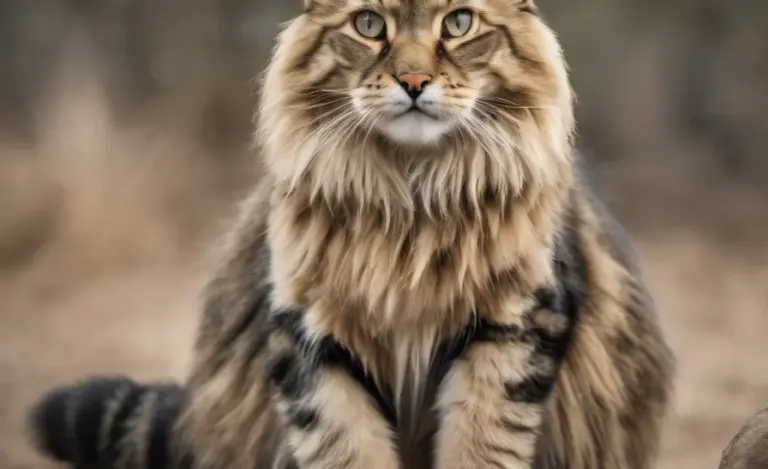
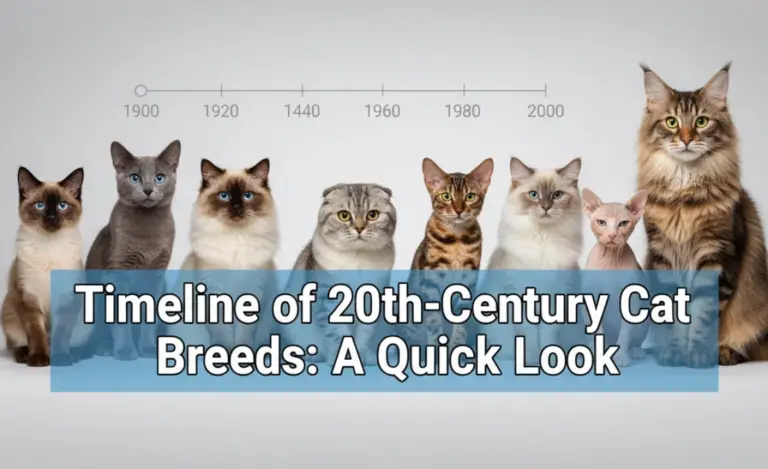

![Timeline of Norwegian Forest Cat: [Ultimate] Guide](https://britishshorthairask.com/wp-content/uploads/2025/11/timeline-of-norwegian-forest-cat-ultimate-guide-768x469.webp)